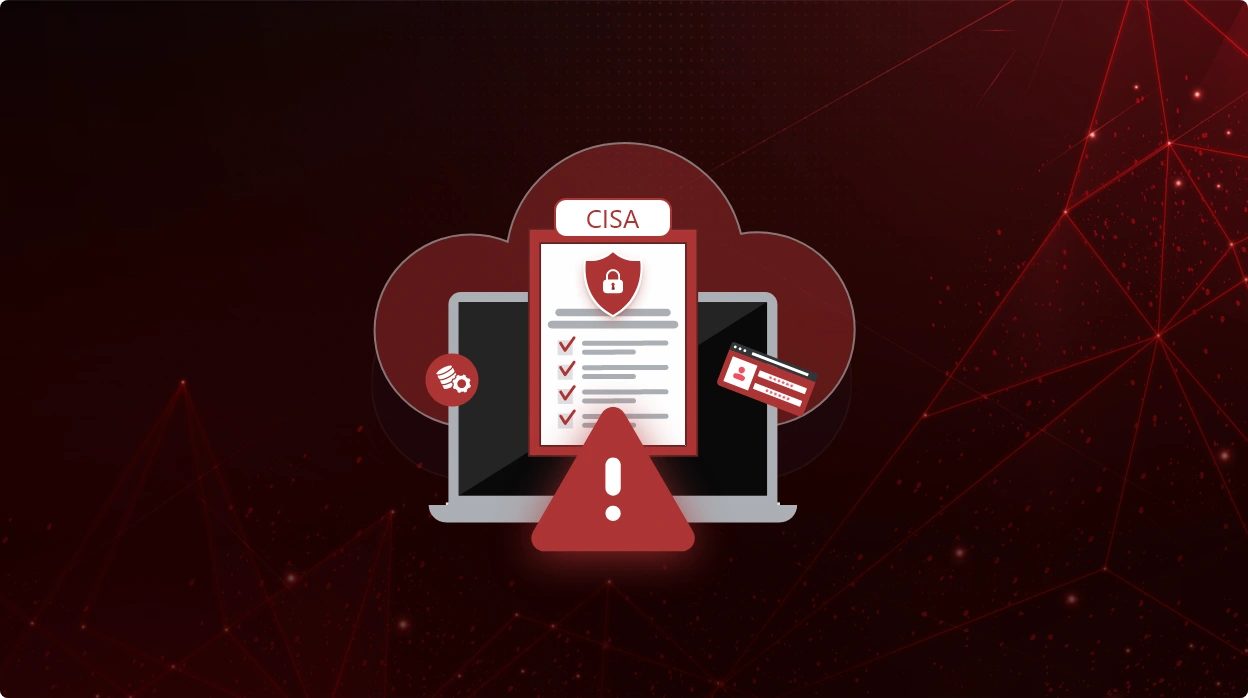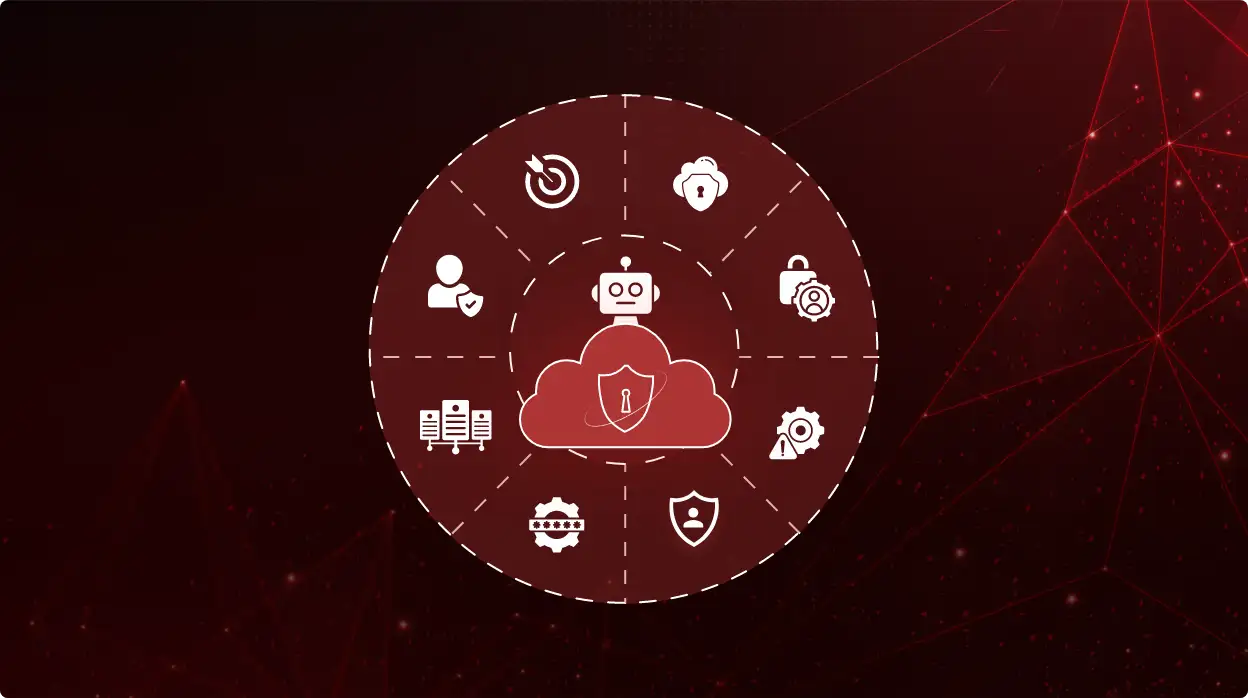
CheckRed Editorial
CWPP – All you need to know
Cloud Workload Protection Platform (CWPP) is a comprehensive security solution designed to safeguard various components of cloud workloads. It provides continuous monitoring and protection against potential security threats in modern cloud environments. CWPP acts as a unified security shield, ensuring that all aspects of cloud workloads are fortified against security vulnerabilities. By offering automated security features and capabilities, CWPP helps organizations maintain the integrity and confidentiality of their data stored in the cloud.
As more and more organizations rely heavily on cloud infrastructure to store and process sensitive information, there is significant importance of CWPP in ensuring robust cloud security.

Understanding cloud workloads
Cloud workloads refer to the various tasks and processes that are executed within a cloud computing environment. These workloads encompass a wide range of activities, including data storage, processing, and application hosting, all of which occur in virtualized environments provided by cloud service providers. Examples of cloud workloads include Virtual Machines (VMs), containers, and serverless functions.
Three important reasons to protect cloud workloads:
- Data security: Cloud workloads often handle sensitive data, including customer information, financial records, and intellectual property. Protecting these workloads ensures the confidentiality and integrity of data stored and processed in the cloud.
- Business continuity: Any disruption or compromise to cloud workloads can result in downtime, affecting business operations and productivity. By safeguarding cloud workloads, organizations can ensure the continuity of critical business processes and services.
- Regulatory compliance: Many industries are mandated to adhere to strict regulations regarding data privacy and security. Protecting cloud workloads helps organizations comply with these mandates and mitigate chances of potential legal consequences.
The need for CWPP
- Legacy infrastructure challenges: Legacy infrastructure presents challenges when transitioning to cloud environments. Many organizations still rely on outdated systems and applications that are difficult to migrate to the cloud. This creates a hybrid environment where legacy and cloud-based systems coexist, posing security risks due to inconsistencies in security measures and outdated software vulnerabilities.
- Complexity of multi-cloud environments: The adoption of multi-cloud strategies, where organizations utilize services from multiple cloud providers, adds complexity to cloud security. Managing security across different cloud platforms requires coordination and consistency in security policies and practices. Without a unified approach to security, organizations may struggle to ensure the protection of cloud workloads across diverse environments.
- Balancing business innovation with security: Organizations today prioritize rapid development and deployment of applications to meet business demands. However, this emphasis on speed often comes at the expense of security. Developers may bypass security protocols to expedite the release of applications, leaving cloud workloads vulnerable to cyber threats.
- Risks due to lack of visibility and control: A lack of visibility and control over cloud workloads pose significant risks to organizations. Without comprehensive monitoring and oversight, security teams may struggle to identify and mitigate security incidents in a timely manner. Additionally, unauthorized access and misconfigurations can go unnoticed, leading to data exposure and compliance issues.
Security benefits of CWPP
- Securing diverse cloud environments: CWPP provides a robust security framework to protect diverse cloud environments, including public, private, and hybrid clouds. By implementing uniform security measures across different cloud platforms, CWPP ensures consistent protection for cloud workloads regardless of their location. This approach enhances the overall security posture of organizations by mitigating vulnerabilities and reducing the risk of unauthorized access or data breaches.
- Ensuring consistency across cloud environments: Consistency is key to effective cloud security management. CWPP offers a centralized platform for managing security policies and controls, ensuring uniformity across various cloud environments. By standardizing security practices and configurations, CWPP helps organizations maintain compliance with regulatory requirements and internal security standards. This consistency minimizes the likelihood of configuration errors or oversight, enhancing the overall security posture of cloud workloads.
- Facilitating secure portability of workloads: The ability to seamlessly migrate workloads between different cloud environments is essential for modern businesses. CWPP facilitates secure portability by providing continuous protection for workloads throughout the migration process. Whether moving from on-premises infrastructure to the cloud or transitioning between cloud providers, CWPP ensures that security measures remain intact. This allows organizations to leverage the flexibility and scalability of cloud computing without compromising security.
Implementing CWPP
Design considerations
When implementing CWPP, it’s essential to consider various design factors to ensure its effectiveness. This includes evaluating the organization’s cloud infrastructure, identifying critical workloads, and defining security policies tailored to specific requirements. Additionally, considering scalability, interoperability, and integration with existing security tools is crucial to designing a strong CWPP implementation strategy.
Zero-trust security approach
Adopting a zero-trust security approach is paramount when implementing CWPP. This model assumes that all users and devices, both inside and outside the network, are potential threats. By enforcing strict access controls and authentication mechanisms, organizations can minimize the risk of unauthorized access to cloud workloads and reduce the impact of security breaches.
Exposing functionality via APIs
Exposing CWPP functionality via APIs allows for seamless integration with other security tools and systems within an organization’s environment. This enables automation of security workflows, streamlines incident response processes, and enhances overall security posture. By leveraging APIs, organizations can maximize the effectiveness of CWPP and improve operational efficiency.
Integrating compliance into CI/CD cycle
Integrating compliance requirements into the Continuous Integration/Continuous Deployment (CI/CD) cycle ensures that security is embedded into the software development lifecycle from the outset. By conducting security assessments, vulnerability scans, and compliance checks as part of the CI/CD pipeline, organizations can identify and remediate security issues early in the development process, reducing the risk of deploying insecure code to production environments.
CheckRed’s CWPP solution
CheckRed offers a comprehensive CWPP designed to protect cloud workloads across diverse environments. Our solution combines advanced scanning and detection capabilities, real-time monitoring, and assisted remediation to ensure the security and integrity of cloud infrastructures.
CheckRed’s CWPP solution provides organizations with:
- Continuous monitoring and detection
- Guided remediation in case of security vulnerabilities
- Unified security management across multi-cloud environments
- Integration with existing security tools and systems
- Compliance enforcement and reporting capabilities
CheckRed’s CWPP addresses the challenges of legacy infrastructure, multi-cloud complexity, and the need to balance development velocity with security. By offering comprehensive security features and capabilities, CheckRed enables organizations to protect their cloud workloads effectively while maintaining compliance with regulatory requirements.
See CheckRed in Action
Dive into the future with our interactive demo
and explore the possibilities.
Related Posts




